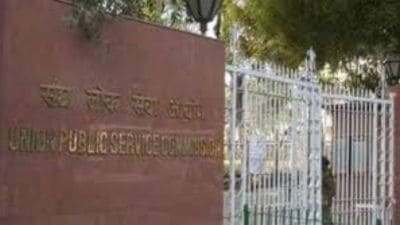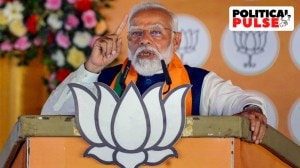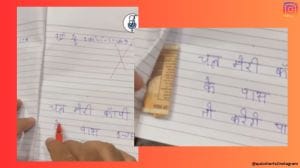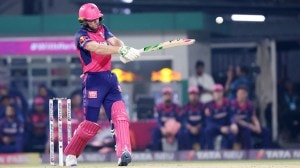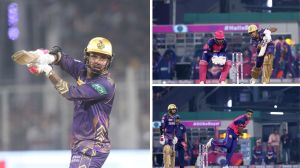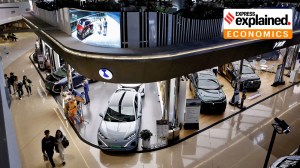- India
- International
Politics and loathing
Election rallies are less about hope, more about hype — and hate.
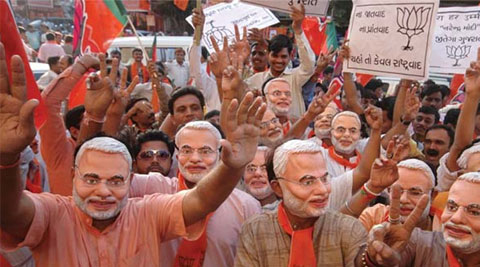 Even in the 1950s, the Nehruvian consensus saw rebellions. But polarising confrontation was on ideological lines.
Even in the 1950s, the Nehruvian consensus saw rebellions. But polarising confrontation was on ideological lines.
Newspaper reports estimate that the four major parties that contested the assembly elections in Maharashtra funnelled about Rs 8,000 crore into advertisements. With spiralling publicity costs, electioneering has become more and more polarising. Soon, one feels, our first-time voters might see the concept of free India polarised into “ours” and “theirs”. If that happens, their voting choices will be driven less by political ideology and more by how swiftly and conclusively the chosen leader can crush the assertion of democratic rights by the other. Elections are always polarising, but earlier, voters were asked to choose between poor, rural Bharat and rich, shining India. Today’s election rallies reveal a sharp polarisation between the rightwing voters and those who do not support the rightwing. In localised TV debates, each village, each town and mohalla seems to root for one or the other of the two Indias. Each side has its own news pundits, solemn readers of the psephological tea leaves, news planters, scandal-mongers and digital data collectors.
Listening to politicians thundering while, out in the streets, sporadic communal riots continue, prices rise and crimes against women persist, many seasoned voters have begun to feel that election rallies are less about hope, more about hype. The humble and dedicated local party worker — the one who would lug the dhurries and gas lights and test the mic before the netaji arrived, who entered local vernacular newspaper offices to buy ad space for the party with vast heaps of coins (against which the netaji had been weighed) — is now extinct. Professional managers are now hired by the party headquarters at enormous costs. Money does not seem to be a problem. Messages to and from the media, both English and vernacular, regarding ad rates now fly digitally. And ad space is paid for by an intricate network of “well wishers”. Then there is the social media with its carefully planted trolls and pictures that sustain the aggressive hate campaigns against opposition candidates.
Parties and their supporters vociferously opposing each other in Parliament and during elections is not new to democratic India. Even in the 1950s, the cult of Nehruvian consensus was shot through with the dark rebellions of Feroze Gandhi, Ram Manohar Lohia and others. But a polarising confrontation was always along clear ideological lines. Charges against the ruling group were logically sustainable, hardly ever personal, and never aimed at provoking India’s dark, communally divisive djinns. Outside the electoral or parliamentary arenas, opposing leaders continued to confer, interact and laugh together, and stood as one in times of national emergency. Present-day leaders’ speeches reveal an absolute loathing of opponents: their brand of politics, their language, their familial background, even their dead ancestors. This is new.
Unlike their smalltown counterparts, our metro-based young voters are mostly glued to their Facebook pages or mobiles. They lean on the web for information, quite unaware that social media are now run by the sheep dogs of warring parties, herding them towards carefully nursed party websites filled with unsubstantiated, crowdsourced facts. For a generation whose childhood was centred around tutorials as well as school-organised, compulsory “nature walks” and “basti” work, political hairsplitting is a boring job. If they take an interest in election speeches, it is in the spirit of chasing a music festival — everyone they hang out with is going. The structure of the event appeals to them more than the actual fare. Few among the young pause to question the worth of stories and glib innuendos about “evil neighbours” and “domestic thugs” conspiring against our democracy.
Sirsa to Sangli, the milling crowds of jobless youth that throng the rallies expect little beyond electoral pyrotechnics. The speakers pander to their egos when they call them unfairly deprived and promise that those who have gained at their expense deserve to pay for it. The leaders who, in 1947, stood for courage and fellowship, a sense of moderation and order, and used these to curb India’s baser instincts, are increasingly being targeted with rage and ridiculed for being lily livered. The very sense of history we grew up on is being revised by these rallies. As you see the eager faces of the young taking in the perverted logic, you get the uneasy feeling that the wild beast that the 1947 riots had unleashed before law and order were restored is slowly being set free to roam once again.

The writer is a Delhi-based journalist and former chairperson of Prasar Bharati
express@expressindia.com
40 Years Ago
EXPRESS OPINION
More Explained
Apr 16: Latest News
- 01
- 02
- 03
- 04
- 05












